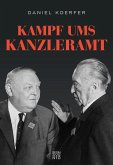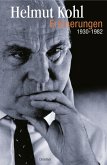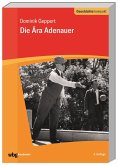Seminar paper from the year 2005 in the subject History Europe - Germany - Postwar Period, Cold War, grade: 2,0, Georgetown University (German and European Studies), course: German and European History I (History 541), language: English, abstract: On July 15th 1949 democracy returned to Western Germany, when the first elections for the Bundestag were held. Christian Democrats (25.2%) and Christian Socialists (5.8%) merged into one parliamentary group and won the elections against the Social Democrats (29.2%). Now they were in charge to form the Federal Republic's first government. The central questions in the formation of the government were would the Christian Democrats govern with or without the Social Democrats. Who would be the first Federal Chancellor and who the first Federal President? The most important issue in the election campaign were economics. The devastated country needed to be rebuilt after the war, the unemployment was threatening and the country would need the help from abroad. Both major parties, Christian Democrats and Social Democrats represented contrary economic ideas. The choice between CDU and SPD was also a choice of Social Market Economy versus Planned economy. After the elections the SPD claimed the Department of Economics, if they would participate in the government.Although it was no official body of the party, a rather informal meeting on August 21st 1949 at the home of the party leader in the British Sector and head of the Verfassungsrat (committee to form the German constitution of the Federal Republic) Konrad Adenauer, seemed to be the focussing event in the memories of most main figures in the party. This meeting, seven days after the election, later known as the Rhöndorfer Konferenz (Conference of Rhöndorf), should become one of the first national myths of the young Republic. The following historiography analyzes the way the story of the conference had been told in the past and how these descriptions influenced our picture of the first Federal government to the present.








